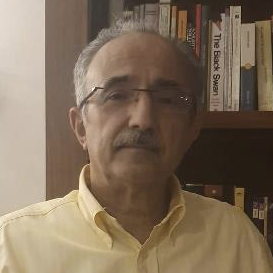Ultracold Gases and Thermodynamics
A special issue of Entropy (ISSN 1099-4300). This special issue belongs to the section "Thermodynamics".
Deadline for manuscript submissions: closed (15 July 2023) | Viewed by 5390
Special Issue Editor
Interests: density correlations; BEC-BCS crossover; global thermodynamics; topological defects in BEC condensates; fundamentals of thermodynamics
Special Issue Information
Dear Colleagues,
Research on ultracold gases has become a mature field of study due the broad range of phenomena that the research can address. Pristine macroscopic quantum systems, formed by atoms or molecules of Fermi or Bose character, can be experimentally tailored to describe a wide range of many-body and condensed-matter problems such as many-body localization, transport in Moire patterns, enquiring into the origin of high-Tc superconductivity, van der Waals molecular structures, quantum droplets, topological phases, dipolar interactions, Rydberg atoms, quantum anomalies, quantum turbulence, and the full elucidation of the transition to superfluidity and the determination of the supersolid phase, to mention a few.
Those and many other fascinating physical problems must certainly be accompanied by the development and adaptation of many-body and thermodynamic theoretical tools, within traditional statistical physics and field theoretical calculations, mean-field theory and beyond, and with modern and powerful numerical techniques, such as quantum Monte Carlo and density matrix renormalization group.
The above-mentioned fundamental challenges are certainly the subject of thermodynamics in the widest sense of the word. Ultracold gases have achieved the goal of unifying a variety of originally different disciplines in physics, yielding a rich melting pot of ideas and techniques that will certainly help to achieve a deeper knowledge of matter at its lowest temperatures.
This Special Issue has the purpose of assembling the knowledge and expertise that have led us to this point, and hopefully to ease the way for further discussion and advancement in our knowledge of the exciting field of ultracold gases.
Dr. Víctor Romero-Rochín
Guest Editor
Manuscript Submission Information
Manuscripts should be submitted online at www.mdpi.com by registering and logging in to this website. Once you are registered, click here to go to the submission form. Manuscripts can be submitted until the deadline. All submissions that pass pre-check are peer-reviewed. Accepted papers will be published continuously in the journal (as soon as accepted) and will be listed together on the special issue website. Research articles, review articles as well as short communications are invited. For planned papers, a title and short abstract (about 100 words) can be sent to the Editorial Office for announcement on this website.
Submitted manuscripts should not have been published previously, nor be under consideration for publication elsewhere (except conference proceedings papers). All manuscripts are thoroughly refereed through a single-blind peer-review process. A guide for authors and other relevant information for submission of manuscripts is available on the Instructions for Authors page. Entropy is an international peer-reviewed open access monthly journal published by MDPI.
Please visit the Instructions for Authors page before submitting a manuscript. The Article Processing Charge (APC) for publication in this open access journal is 2600 CHF (Swiss Francs). Submitted papers should be well formatted and use good English. Authors may use MDPI's English editing service prior to publication or during author revisions.
Keywords
- Bose–Einstein condensation
- BEC-BCS crossover
- optical lattices
- superfluidity
- quantum simulators
- quantum phase transitions
- topological phases






